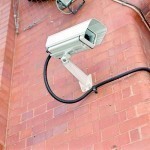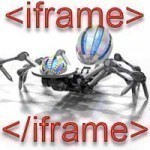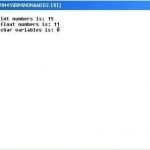Teleportation refers to instantaneous transport of an object or matter from one place to a predetermined location. In this mode of travel, the object or matter being transported is broken down and immediately recreated somewhere else. In quantum teleportation, which is the favored teleportation type in laboratories, the properties of the origin quantum system are recreated in the destination quantum system even if the two quantum systems do not have physical contact. Most people, however, hold to the belief that teleportation will forever remain fiction, with the more knowledgeable pointing Read More
Circuit Simulator
A circuit simulator is a computer program that predicts how electronic circuits work. Circuit designs are first entered through the schematic editor, then the simulation engine solves the complex equations that govern circuit behavior. Circuit simulators are especially useful for designing integrated circuits that are impractical to prototype using breadboards. The three types of simulator are analogue, digital, and mixed mode. Schematic Editor Early schematic editors were text-based and difficult to use, but modern editors have a graphical interface that allows designers to drag and drop electronic components onto the Read More
Cryptography

Cryptography is the study and practice of encoding data using transformation techniques so that it can only be decoded by specific users. In simpler words, it is a theory of secret writing. Practitioners of cryptography are known as cryptographers. Cryptography is the technique of using mathematics, computer science and engineering to encrypt and decrypt information. It facilitates a user to store vital information or send it across insecure networks (like the Internet) so that it cannot be interpreted by any user except the intentional receiver. While cryptography is the technique Read More
What is Rotoscoping?

One of the oldest animation techniques that is still in use today is rotoscoping. When using this technique, animators trace over live action film movement on each frame to use in an animated film. When it was first used, live action film images were projected onto a glass panel that was frosted where an animator would redraw them. The associated projector is called a rotoscope. However, computers have replaced it in the past two decades. Today, the term refers to manually creating a matte for a visual element on a Read More
How CCTV Works

CCTV (Closed Circuit TV) uses one or more video cameras to transmit video and sometimes audio images to a monitor, set of monitors, or video recorder. The difference between CCTV and standard TV is that standard TV openly broadcasts signals to the public. CCTV is not openly transmitted to the public. CCTV uses either wireless or wired transmission to send the broadcast from the video cameras to the monitor(s) or recording device. Most CCTV systems are used for surveillance, which can include security monitoring, spying, or safety monitoring. CCTV Cameras Read More
How Do Stars Form?
Stars form within clouds of dust that are scattered around the galaxies of our Universe. In essence, a star is dust that is pulled toward a central point of gravity and, when this happens, begins to heat up. The formation of a star results in something like our own Sun which took 50 million years to turn into what it is today. And, our Sun will last another five billion years–or ten billion years in total from the formation of the Universe. Within these clouds of dust there is a Read More
Free Library Software

Library software is a type of software that allows users to keep an organized catalog of media. These catalogs may include books, files, music, videos, images, software, or collections of information. Library software often includes tools that allow the user to organize and search through their catalogs and may be used for a wide variety of applications. For example, recording studios use library software to catalog their music while actual libraries use library software to catalog their books, cassettes, and other merchandise. This article will demonstrate the advantages of library Read More
iFrame Injection

An iFrame injection is a very common cross site scripting (or XSS) attack. It consists of one or more iFrame tags that have been inserted into a page or post’s content and typically downloads an executable program or conducts other actions that compromise the site visitors’ computers. In the best case, Google may label the site “malicious.” The worst case is that the site owner and visitors end up with malware infected computers. iFrame Injection Examples A basic iFrame injection may be something as simple as: <iframe src=”http://www.badwebsite.com/inject/?s=some-parameters” width=”1″ height=”1″ Read More
How to Video Conference on Skype

Skype is an instant messaging software that is used worldwide because it is easy to use and has a large collection of social tools and communication based features. While Skype is first and foremost an instant messaging program, it is also used for audio and video calls and may be used to conduct conference calls with an unlimited number of attendees. Skype also issues each user a unique profile and includes emoticons, signatures, and font options. Skype also allows users to play games with other Skype users and conduct file Read More
Template

A template is one of the features added to C++ recently. It is a new concept which enables the programmer to define generic classes and functions; thus provides support for generic programming. Generic programming is an approach, where generic types are used as parameters in algorithms so that they work for a variety of suitable data types and data structures. A template can be used to create a family of classes or functions. For example, a class template for an array class would enable us to create arrays of various Read More


Share on: